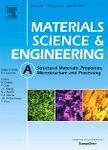版权所有:内蒙古大学图书馆 技术提供:维普资讯• 智图
内蒙古自治区呼和浩特市赛罕区大学西街235号 邮编: 010021

作者机构:National Key Laboratory of Precision Welding & Joining of Materials and Structures Harbin Institute of Technology Harbin150001 China Chinese Flight Test Establishment Xi'an710089 China School of Materials Science and Engineering Harbin Institute of Technology Shenzhen518071 China
出 版 物:《Materials Science and Engineering: A》 (Mater. Sci. Eng. A)
年 卷 期:2025年第922卷
核心收录:
学科分类:0806[工学-冶金工程] 08[工学] 0805[工学-材料科学与工程(可授工学、理学学位)] 0702[理学-物理学] 0801[工学-力学(可授工学、理学学位)]
摘 要:Electron beam welding (EBW) of Ti2AlNb and TA15 was experimented with and without an Al interlayer to analyze the effect of Al on the evolution of microstructure in the fusion zone (FZ) and its impact on joint performance. When welded without Al layer, significant softening occurred in the FZ with a microhardness of 250 HV, which was much lower than that of two base metals (BMs). The FZ was mainly composed of B2 phase which was softer than that of the O and α2 phase in Ti2AlNb BM as well as the α+β phase in TA15 BM. Furthermore, the weld was dominated by coarse columnar grains, which further resulted in the softening of the weld. The tensile strength of the joint at room temperature reached 914 MPa. Al element was introduced in subsequent experiments to improve the softening problem. Adding 50 μm thick Al layer could not completely improve the softening phenomenon, but the softening problem was solved with the 100 μm thick Al layer. When the thickness of Al layer was 50 μm, the main component phase of FZ changed to α′ martensite which was harder than B2 phase, and the microhardness increased by 30 HV. The tensile strength of the joint reached 946 MPa. The formation of the α2 (Ti3Al) phase in FZ during welding with 100 μm Al layer significantly enhanced its microhardness to 380 HV. And there was no obvious change in tensile strength when the softening problem was solved. All joints were fractured in the FZ. As the thickness of Al layer increased, the fracture mechanism gradually changed from quasi-dissociative fracture to brittle fracture. © 2024 Elsevier B.V.